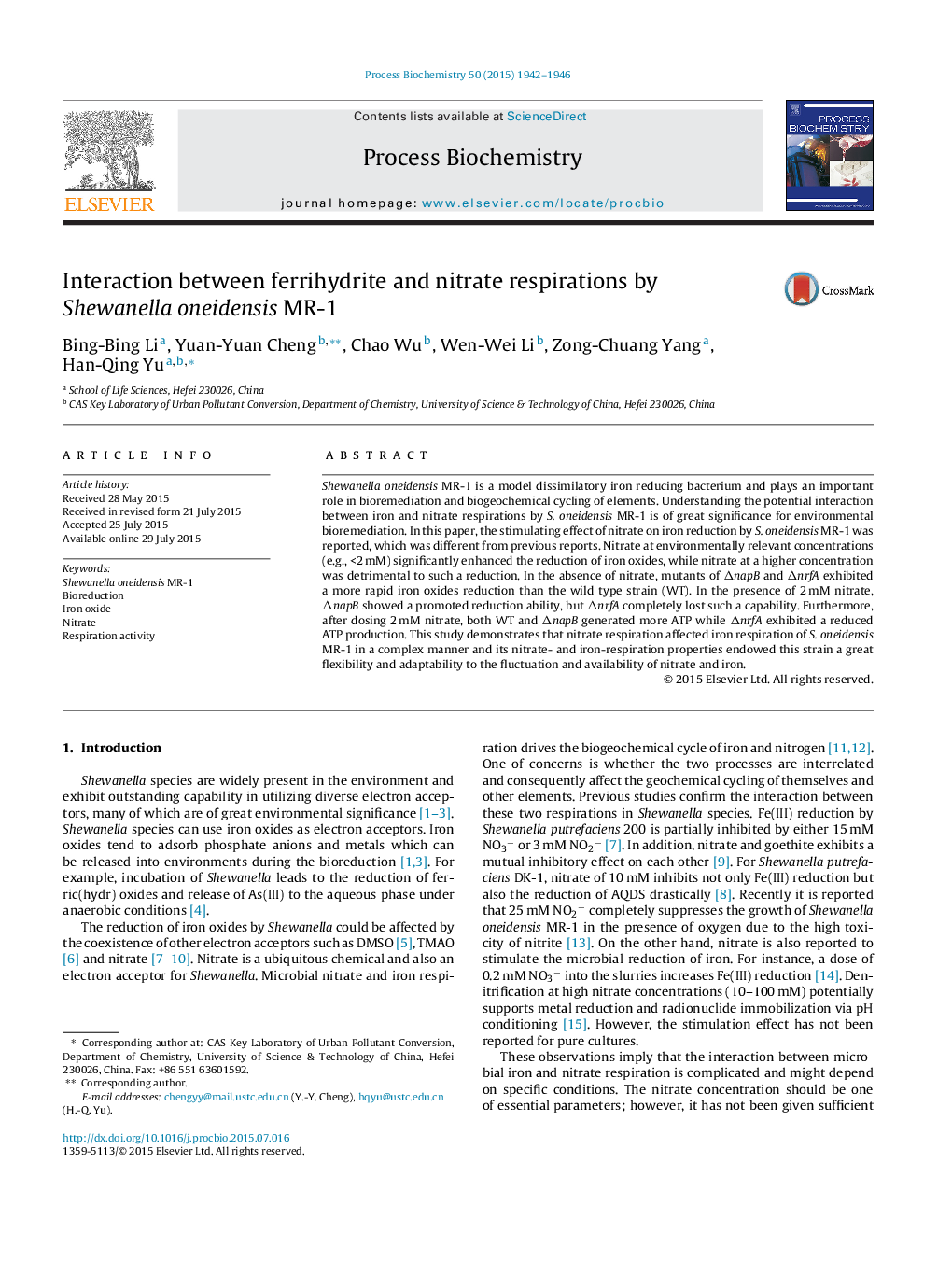| Article ID | Journal | Published Year | Pages | File Type |
|---|---|---|---|---|
| 34295 | Process Biochemistry | 2015 | 5 Pages |
•Low-level NO3− increased HFO reduction rate through stimulating cell activity.•NO2- was harmful to cell respiration through inhibiting HFO and NO3- reduction.•Low-level NO3− has a synergistic effect with the iron respiration in Shewanella.
Shewanella oneidensis MR-1 is a model dissimilatory iron reducing bacterium and plays an important role in bioremediation and biogeochemical cycling of elements. Understanding the potential interaction between iron and nitrate respirations by S. oneidensis MR-1 is of great significance for environmental bioremediation. In this paper, the stimulating effect of nitrate on iron reduction by S. oneidensis MR-1 was reported, which was different from previous reports. Nitrate at environmentally relevant concentrations (e.g., <2 mM) significantly enhanced the reduction of iron oxides, while nitrate at a higher concentration was detrimental to such a reduction. In the absence of nitrate, mutants of ΔnapB and ΔnrfA exhibited a more rapid iron oxides reduction than the wild type strain (WT). In the presence of 2 mM nitrate, ΔnapB showed a promoted reduction ability, but ΔnrfA completely lost such a capability. Furthermore, after dosing 2 mM nitrate, both WT and ΔnapB generated more ATP while ΔnrfA exhibited a reduced ATP production. This study demonstrates that nitrate respiration affected iron respiration of S. oneidensis MR-1 in a complex manner and its nitrate- and iron-respiration properties endowed this strain a great flexibility and adaptability to the fluctuation and availability of nitrate and iron.
Graphical abstractFigure optionsDownload full-size imageDownload as PowerPoint slide
